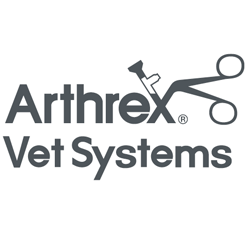An Evolving Philosophy of Pain Management
Pain management in companion animal practice is no longer limited to providing analgesia after fracture repair (i.e., acute pain) or prescribing a nonsteroidal anti-inflammatory drug (NSAID) to an osteoarthritic dog that can no longer climb stairs (i.e., chronic pain). As advocates of our patients whose owners are often unaware of the signs of pain, our thinking must evolve around pain management to include the rapid detection of pain, combined with early multimodal intervention. We must switch our focus from damage control pain management to proactive pain management. This philosophical shift is particularly relevant to handling chronic pain, in which problems are not quickly resolved and must be managed over the long term. Chronic pain is ubiquitous in companion animals, most commonly as the result of OA, whose reported prevalence appears to be close to 40% in dogs and >50% in cats.2–4 Chronic pain may also be a consequence of dental, spinal, or cancer pain and other chronic conditions. Managing pain in companion animals must take a collaborative approach, coordinated by owners and a veterinary team who are alert and responsive to changes.
Proactive and Preemptive Pain Management
It is well accepted that acute surgical pain is most effectively managed preemptively.5,6 In this context, “preemptive” means administering analgesic therapies as early on in the disease process as possible or, in the example of preemptive perioperative analgesia, administering analgesics prior to the start of surgery. This philosophy of management can also be applied to chronic pain—treating earlier in the disease process to prevent the adverse effects of ongoing noxious input.
Preemptive treatment, across both acute and chronic pain, is most effective if a proactive approach to pain management is taken. This approach means understanding when pain may be present, taking proactive steps to assess for pain, and educating and engaging the whole veterinary team and owners about pain assessment.
For acute pain, this means having the whole veterinary team educated in how to assess pain in the clinic and putting in place proactive protocols to assess and reassess pain.
In chronic pain conditions, this begins by making owners aware of the risk of chronic disease and its accompanying pain. For example, several dog breeds are at high risk of hip dysplasia, elbow dysplasia, or patellar luxation, as shown by the statistics of the Orthopedic Foundation for Animals (https://www.ofa.org/diseases/ breed-statistics). Similarly, the majority of cats >10 years of age show signs of OA pain.
Proactive pain management also includes implementing measures to slow the progression of chronic problems that can be associated with pain. For example, in dogs at risk of OA, growth should be slowed to minimize the expression of faulty genes,7 body condition should remain within the optimal range,8 and exercise should be encouraged as it may be protective for hip dysplasia.9 Dogs should be acclimated to activities that become part of their long-term management such as leash walks or the application of a cold pack.
Owner engagement is key to shifting toward proactive treatment for chronic pain conditions. Musculoskeletal pain (e.g., OA) is very common in dogs and cats, and clients can be engaged in the process of watching their pets for changes in posture, gait, demeanor, and ability to perform daily activities and regularly asked about behavioral changes they observe. Owners can also be educated regarding the high prevalence of chronic pain among pets and the unique postures or behaviors that animals adopt as attempts to alleviate pain. The importance of how pain management is communicated to the owner by an aligned practice team cannot be overemphasized. Early symptoms of chronic disease should be proactively looked for, fully discussed with owners, and managed promptly so that early acute pain does not progress to chronic pain that is more resistant to treatment.
Coordinated Pain Management
Coordinated pain management extends the responsibility for the development and implementation of the treatment plan to the whole veterinary team. This requires that everyone on the team understands the signs of pain and principles of pain management in order to adopt a common vision for patient care. Ideally, a case coordinator, usually a veterinary technician, would be delegated to regularly reach out to a pet owner and make sure that pain is being effectively managed and pets are willing and able to perform daily activities. Communication between the technician and veterinarian is vital. Patients would then be reevaluated regularly (every 3–6 months) with additional evaluations if problems are identified by the case coordinator or owner. To optimize adherence, owners need to understand the reasons for early intervention, and therapy should minimize the financial, physical, emotional, and logistical burden placed on caretakers. The management of chronic pain is a continuing service that the veterinary team offers its clients. The service philosophy generates a strong bond with the owner and protects companion animals from the severe impact of undertreated chronic pain.
Gentle Handling
It is important to focus on conscious awareness of gentle, or animalfriendly, handling of all patients—but especially the painful patient. As some owners do not appreciate their pet’s condition in the absence of a clearly painful response to manipulation, it can be necessary to educate the client on nonverbal or less severe reactions given by the patient (e.g., holding breath, licking of the lips, looking away) versus vocalization. This approach will also allow for a more complete physical examination with the pet’s cooperation and will demonstrate to the client that the practice team has a strong awareness of the need to minimize the patient’s pain. For cats, previously published guidelines on feline-friendly handling practices provide a more detailed discussion of this important aspect of pain management.10 Previsit medications such as trazodone or gabapentin may still be given prior to appointments; although some sedation may be present, these drugs will not produce analgesia to the extent that pain cannot be used as a diagnostic tool, and calmer pets are more compliant with physical and orthopedic examinations.







